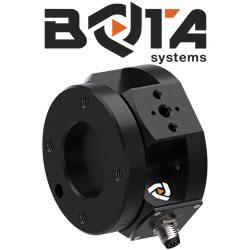Types of PCB Vias - a guide to the 8 different via types
Explore the 8 types of PCB vias - through-hole, blind, buried, microvias, stacked, staggered, tented, and via-in-pad. Learn how each supports signal routing, thermal management, and high-density layouts in multilayer PCB designs. Ideal for HDI and advanced circuit boards.
Types of PCB Vias - a guide to the 8 different via types
As electronic devices continue to shrink in size while increasing in complexity, PCB vias play a critical role in enabling multi-layer interconnections, high-speed signal integrity, and thermal performance.
San Francisco Circuits has published a comprehensive guide on the 8 most essential types of PCB vias, helping designers, engineers, and procurement teams navigate the challenges of modern board manufacturing.
The 8 Main Types of PCB Vias
Each via type serves a specific function depending on the board's structure, component density, and electrical requirements:
Through-Hole Vias - Standard, full-depth vias that connect all PCB layers.
Blind Vias - Connect outer layers to select inner layers without penetrating the entire board.
Buried Vias - Connect internal layers only; invisible from the outer surfaces.
Microvias - Laser-drilled vias (≤150 µm), ideal for HDI and miniaturized designs.
Stacked Vias - Vertically aligned blind/microvias for dense multi-layer connections.
Staggered Vias - Offset vias that reduce stress and improve reliability.
Tented Vias - Covered with solder mask for protection and isolation.
Via-in-Pad (VIP) - Placed beneath component pads, critical for BGA and thermal performance.
Why It Matters: Performance, Reliability & Manufacturability
Space Optimization - Use blind, buried, or microvias to increase routing density.
Thermal Management - Leverage thermal vias for heat dissipation beneath power devices.
Signal Integrity - Reduce signal path lengths and crosstalk with VIP and staggered vias.
Structural Strength - Through-hole vias offer excellent mechanical robustness.
Whether you're building for RF applications, HDI boards, or mission-critical systems, knowing when and how to use each via type is key to reducing cost, improving performance, and ensuring manufacturability.
San Francisco Circuits - Your Expert in Advanced Via Technology
With expertise in fabricating complex multilayer and HDI PCBs, San Francisco Circuits offers advanced via capabilities, including:
Laser-drilled microvias
Sequential lamination for stacked & buried vias
Via-in-pad filling and capping
Thermal via optimization for heat-sensitive components
Our engineering team can help optimize your stackup and via strategy to meet stringent performance, size, and reliability requirements.
Read more including the full breakdown on the Types of PCB vias on the San Francisco Circuits website.
Featured Product

Bota Systems - The SensONE 6-axis force torque sensor for robots
Our Bota Systems force torque sensors, like the SensONE, are designed for collaborative and industrial robots. It enables human machine interaction, provides force, vision and inertia data and offers "plug and work" foll all platforms. The compact design is dustproof and water-resistant. The ISO 9409-1-50-4-M6 mounting flange makes integrating the SensONE sensor with robots extremely easy.
No adapter is needed, only fasteners! The SensONE sensor is a one of its kind product and the best solution for force feedback applications and collaborative robots at its price. The SensONE is available in two communication options and includes software integration with TwinCAT, ROS, LabVIEW and MATLAB®.
